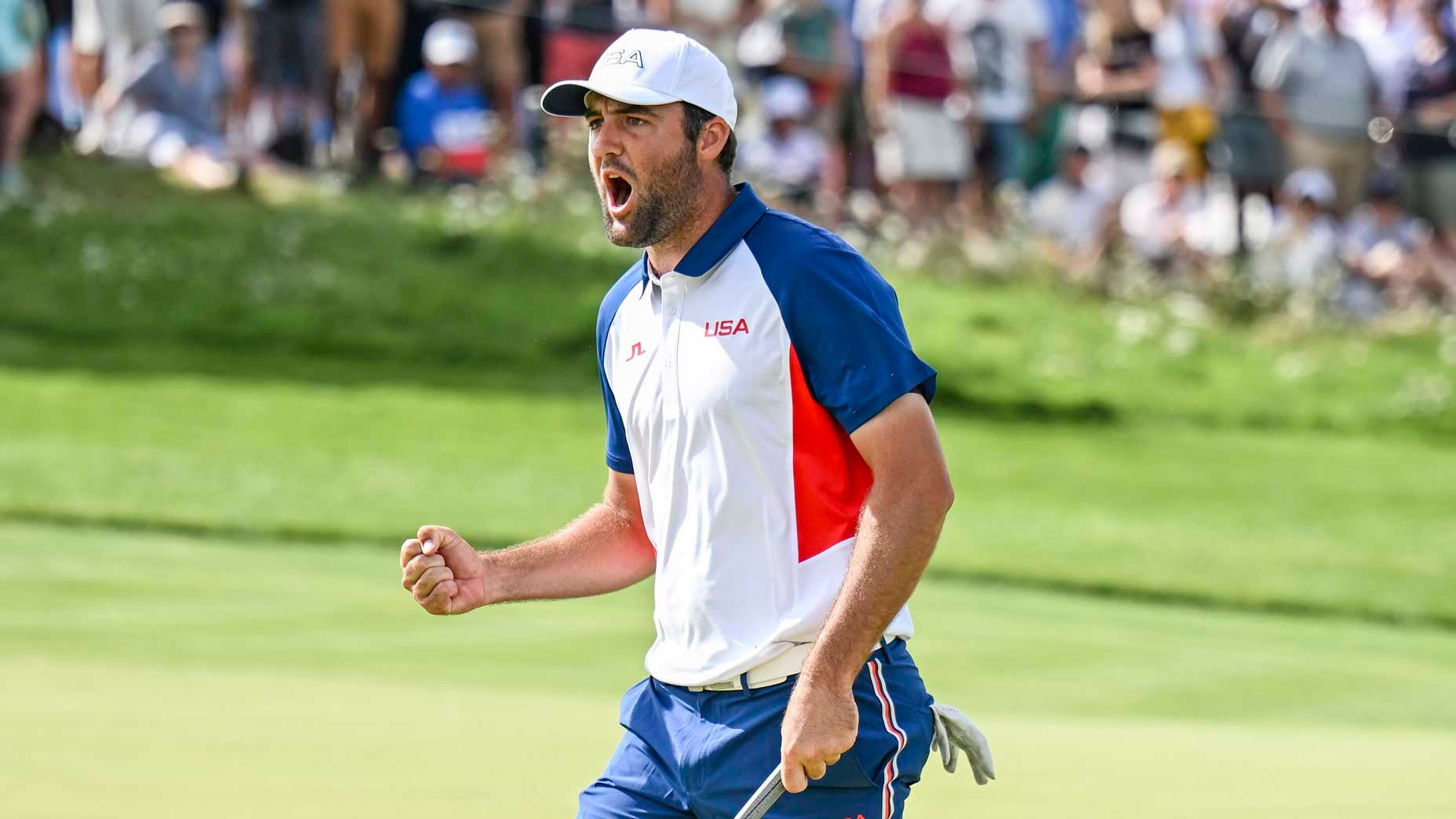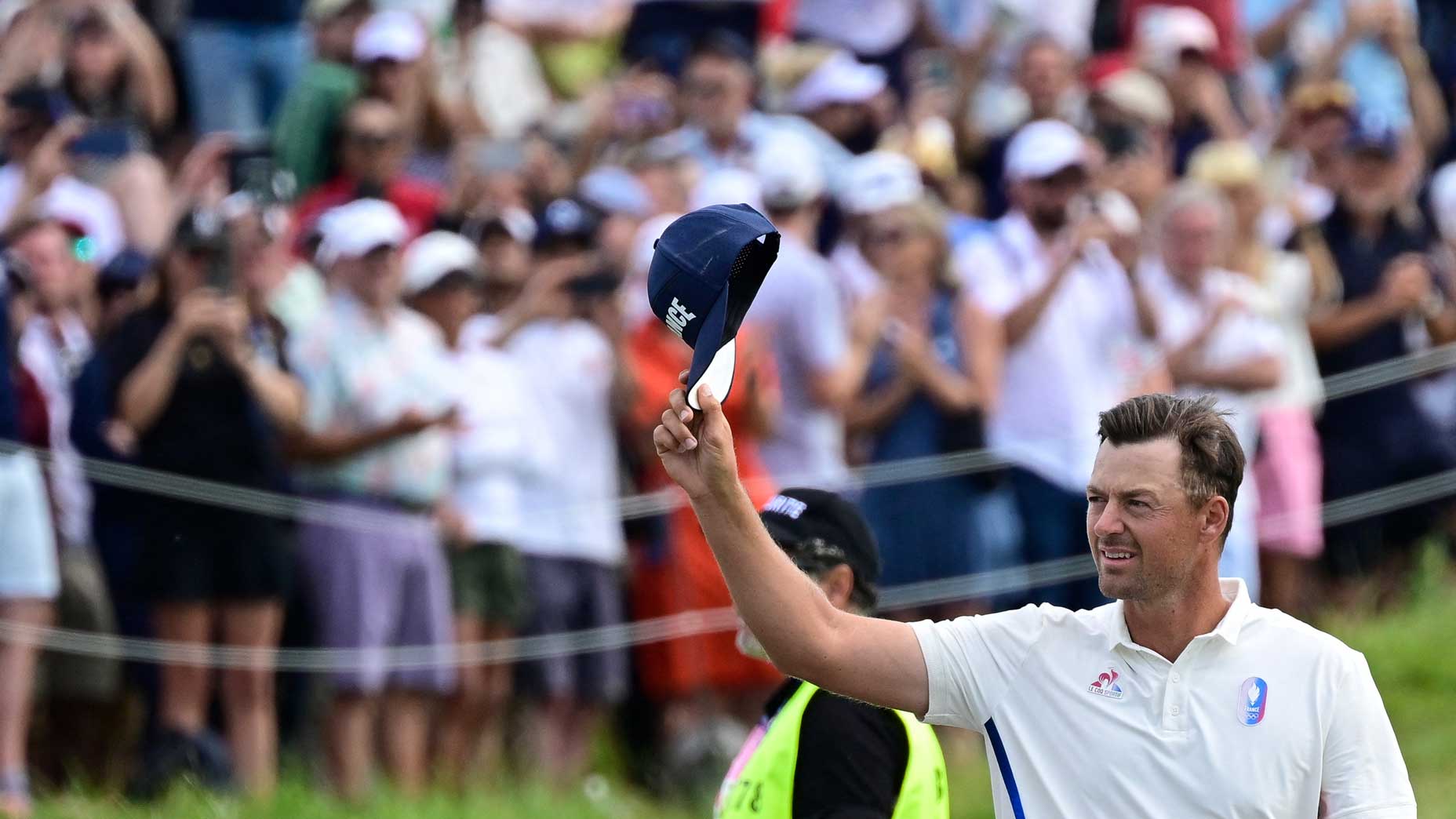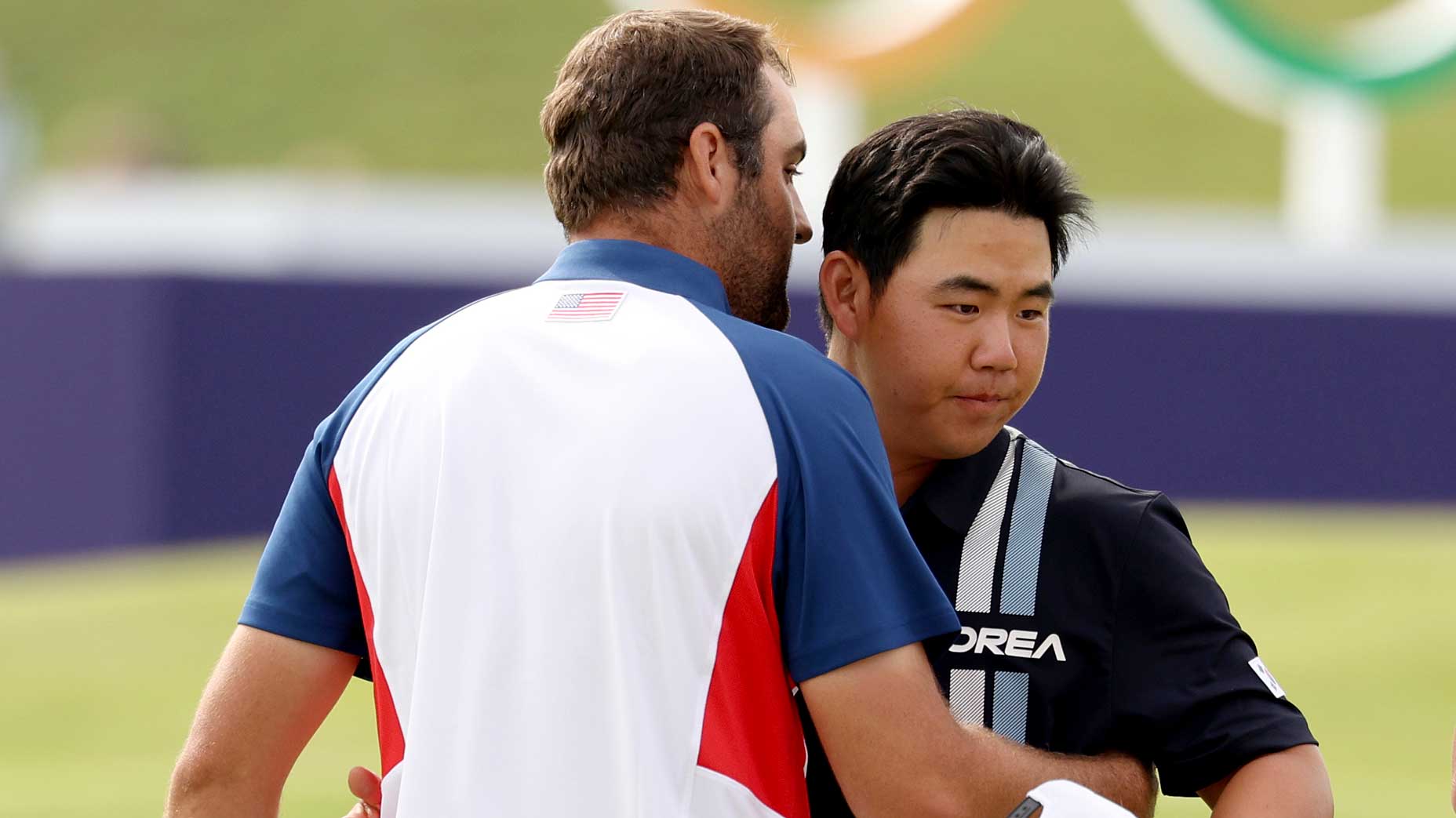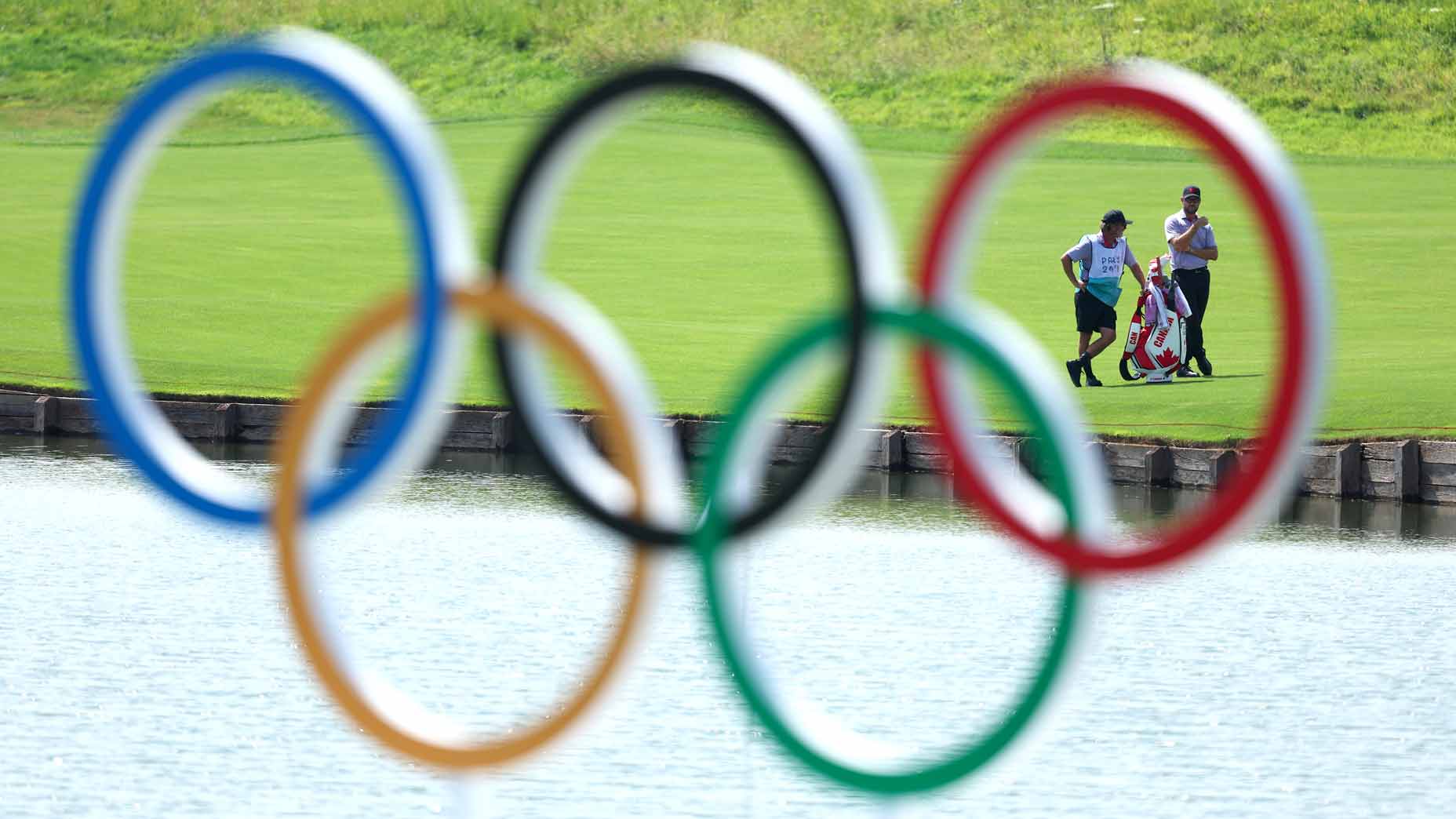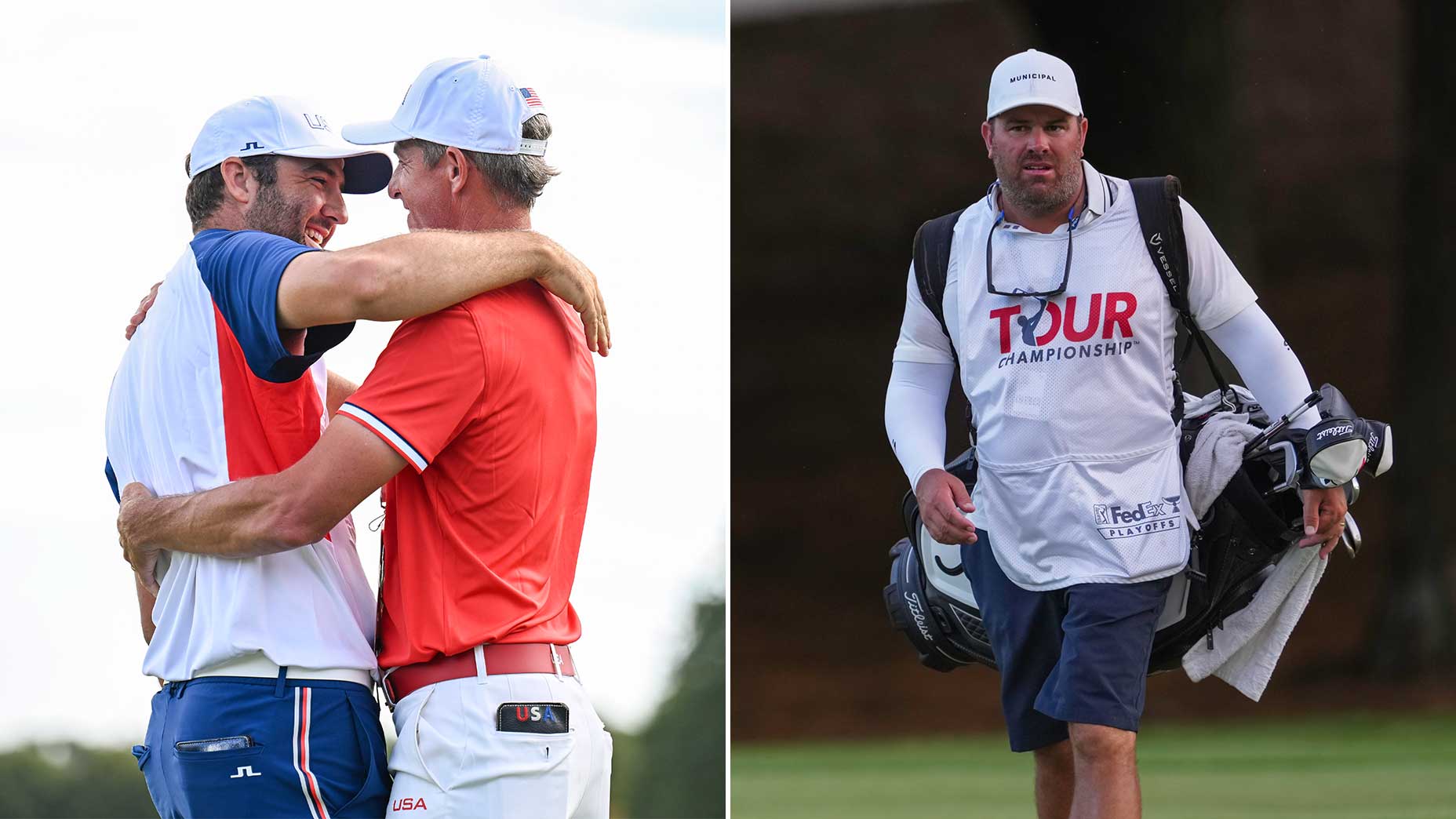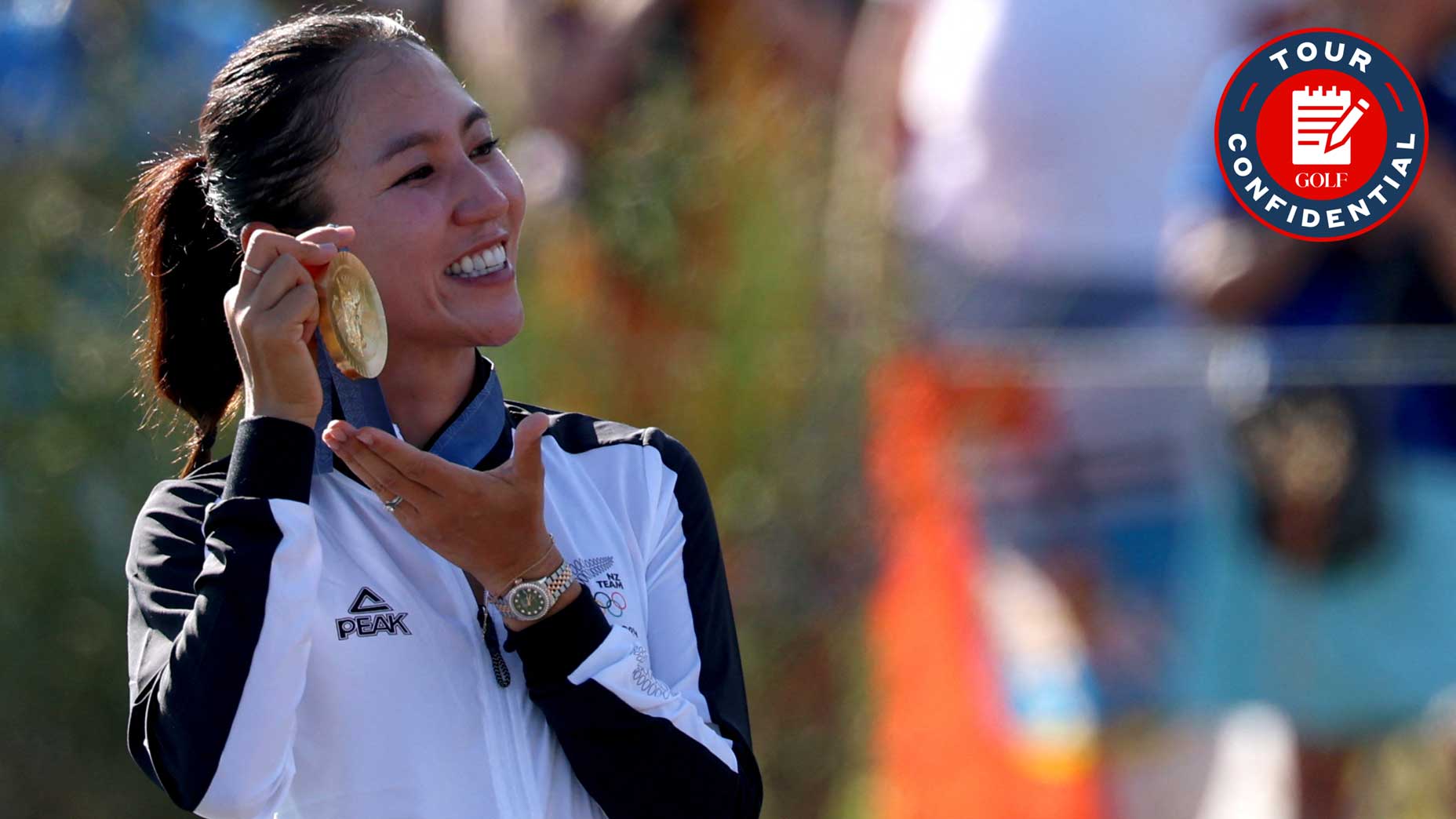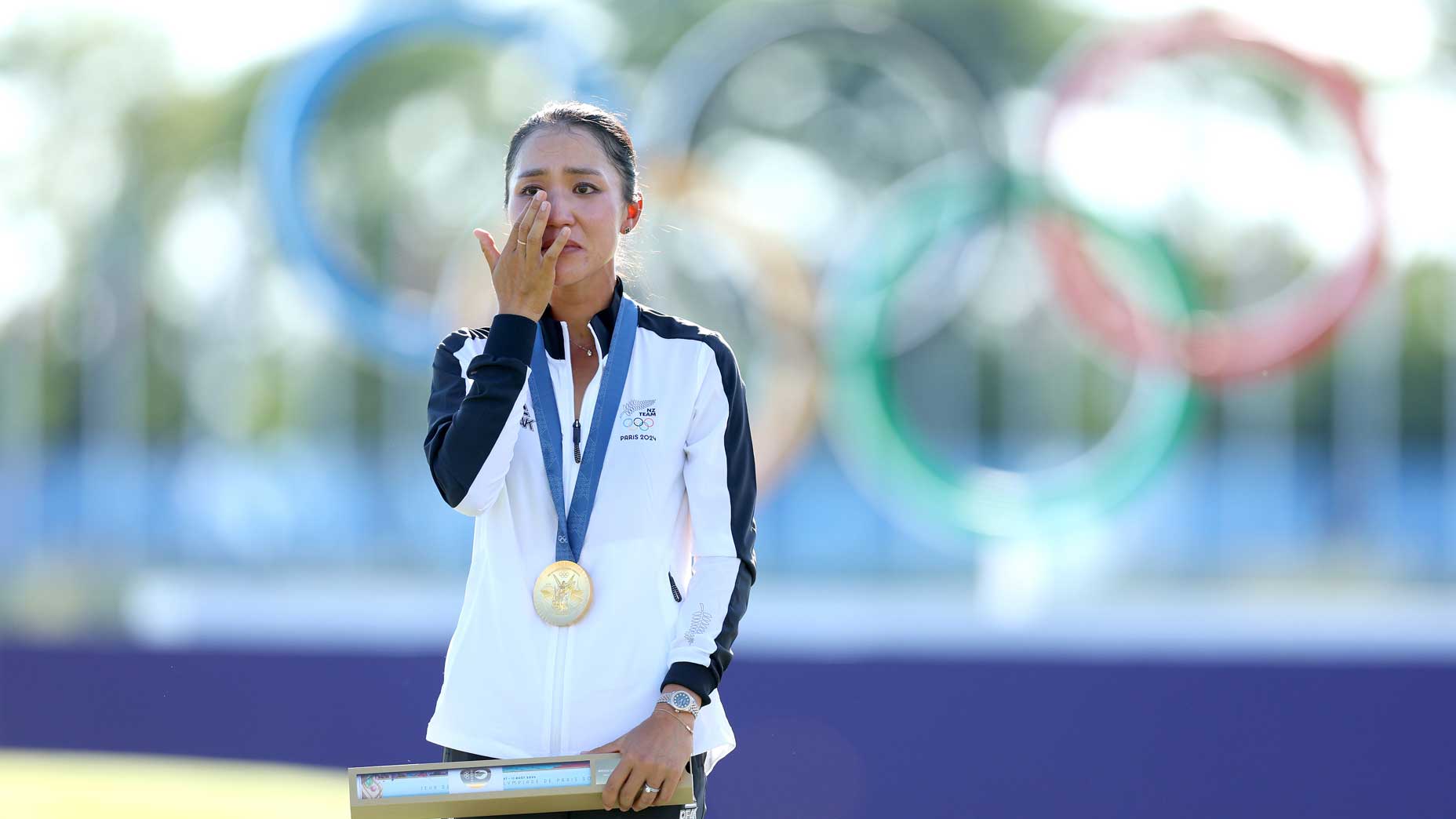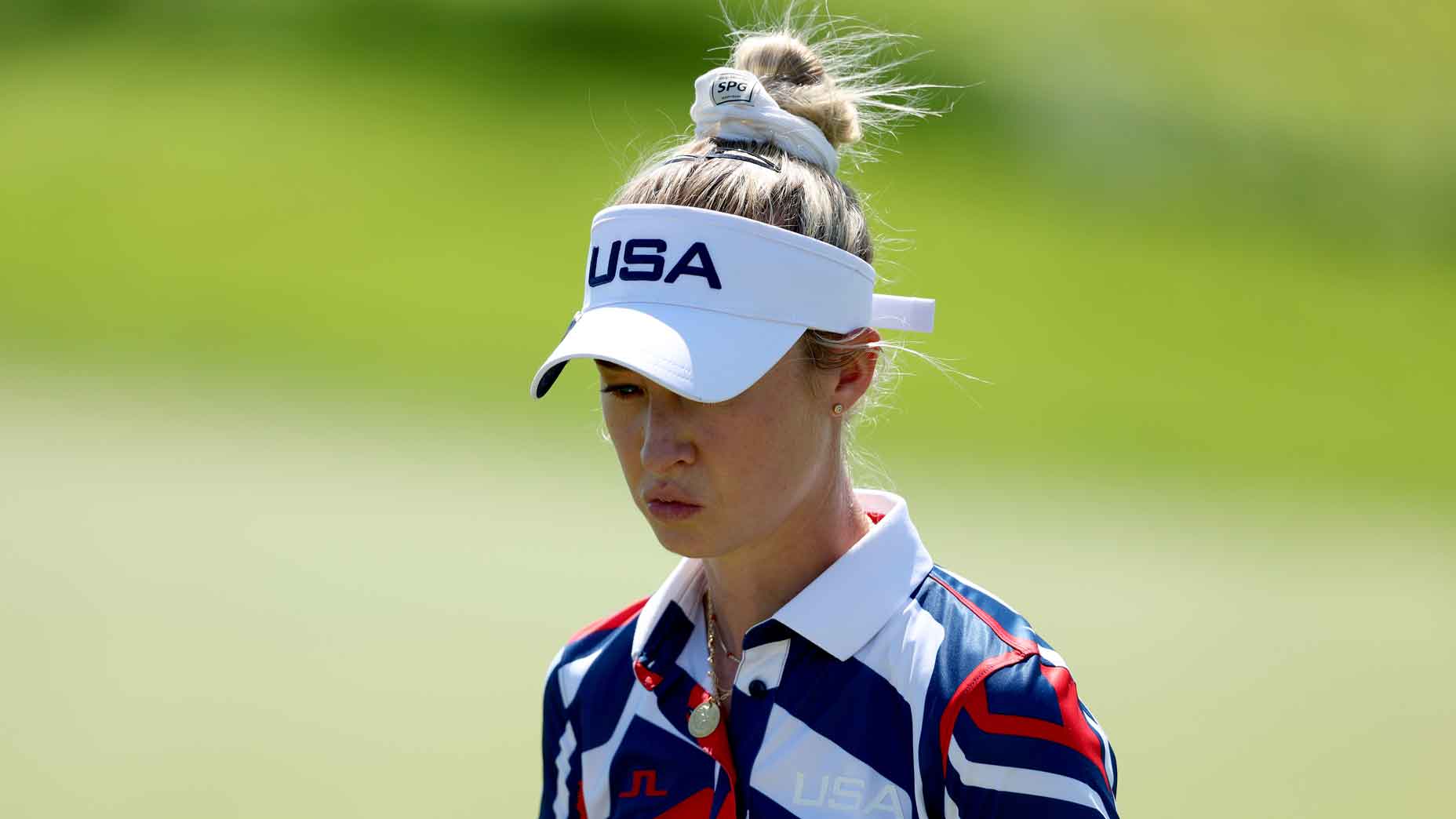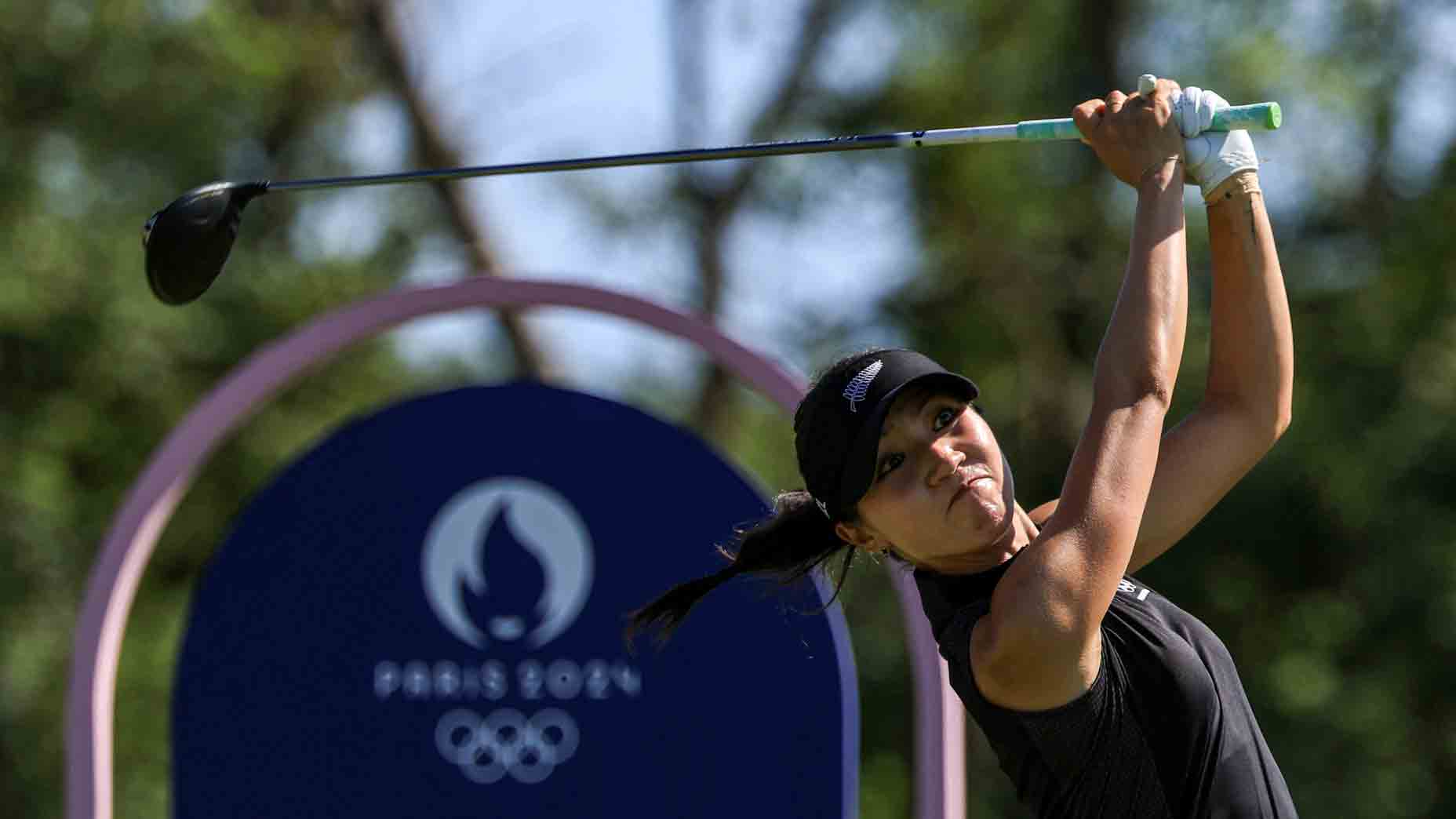SAINT-QUENTIN-EN-YVELINES, France — Anyone who set foot at Le Golf National Sunday knows at least the tune now, if not all the lyrics. “La Marseillaise,” France’s 232-year-old national anthem became the song of the summer in these parts, covering the final few hours of the men’s Olympic golf competition.
And how fitting a hymn for what became an epic final found.
“Arise, children of the Fatherland,” goes the opening line, “the day of glory has arrived!”
Or “Allons, enfants de la Patrie, Le jour de gloire est arrivé!” as fans heard on repeat from thousands of Victor Perez‘s newest supporters.
The 31-year-old from a small town in Southern France hit the opening tee shot of these Games, way back on Thursday morning, which for him must feel like a month ago. No one has been busier, finishing each day posted up above the 18th green like a famous book author, a line of 50-plus inching closer for autographs and photos.
On Sunday morning, Perez was five shots out of a medal position and warned his playing partners, “Just an FYI guys, it might get a little loud out there.” He didn’t warn them that he was going to go nuclear on the back nine, with a birdie-birdie-eagle-birdie-birdie stretch to reach 16 under, one shot outside the podium. That’s when the “La Marseillaise” reached a fever pitch. Christiaan Bezuidenhout, a South African and one of those playing partners, was egging on the masses. Only at the Olympics.
Players in the field have been joking that Perez was getting the “Tiger Woods treatment” this week, creating so much noise and fan movement that it became a disturbance. On Sunday, so be it. Perez was the perfect grand marshal, whipping the place into a frenzy as the rest of the field followed like floats in a golf parade.
Rory McIlroy, the game’s most global star, went on a five-birdie streak of his own, reaching 17 under on the 15th tee. What felt like a day-long run at the Bronze had suddenly become a sprint for the Gold. “I looked at the board again after I birdied 14,” McIlroy said, “and I was one behind and I was like, Holy s—t, what just happened?”
In the time it took McIlroy to play the par-5 14th, Jon Rahm had surrendered a four-shot lead with a pair of bogeys. Multiple players, McIlroy included, had admitted that seeing “20 under” next to “Rahm” on the leaderboard meant this event was over. Au contraire.
Fans had tied green, white and orange Irish flags around their neck like capes and sprinted to beat McIlroy to the 15th fairway. They held their breath as his wedge shot floated toward the green, and then buckled just like he did when his ball fell into the water.
It was now time for France’s third-favorite golfer to shine. The adopted son with flowing locks who received such intense support that earlier in the week Wyndham Clark had asked, “Is this your home country?”
That’s right, Englishman Tommy Fleetwood.
Fleetwood won the French Open here in 2017 and starred in the 2018 Ryder Cup, also at Le Golf National. The French love his heroics and everyone loves his hair, but there was a bit more to Tommylad this week. “Aye, he’s from Southport,” one father murmured as Fleetwood took the tee on 14. The rest of his family nodded knowingly, sullenly. Fleetwood was raised in Southport, where his father and cousins still live, and where a tragic mass stabbing took place Monday, triggering a wave of protests across Britain.
‘Oh, sh*t, am I actually in this?’ Home-country darling sends Olympics into frenzyBy: Jack Hirsh
Fleetwood deleted Rahm’s lead — and quickly, with birdies at 11 and 12. What a Gold Medal would mean to the people of Southport, Fleetwood didn’t even want to speculate. But rest assured people were thinking about it Sunday afternoon.
They were thinking about Tom Kim, too, especially when he brushed in a 7-footer on the 15th, reaching 15 under and daring us all to walk, for just a moment, in his shoes. Kim wasn’t in the Gold Medal chase but were he to nab any place on the podium, he would earn an exemption from his looming (if distant) mandatory military service in South Korea. Every missed putt of his was met with an audible groan.
Scottie Scheffler, one of Kim’s best friends in Dallas, was playing alongside him, and had to be rooting for him, too. When Kim grabbed his ball out of the cup on 15, Scheffler re-marked his ball just 13 inches from the hole and tapped in for a quiet birdie. His seventh of the day.
All week long players had been discussing the rabid Olympics crowd as something different. It included many golf fans, sure, but also many Olympics fans — indifferent, boisterous sports fans, who don’t necessarily know when to clap or when to stay silent, or the appropriate times to belt “La Marseillaise.” With all these runs happening at once, you wanted to reach out and tell them this was special. To remind them that, Hey, this land used to be flat.
“Flat and barren,” the architect of Le Golf National once wrote. Nearly 40 years ago — and 23 years before golf was approved to be an Olympic sport — the French Golf Federation commissioned Hubert Chesneau to create a true stadium course, perfect for tournament golf, TV coverage and, importantly, fantastic on-site viewing.
“This is what TPC Sawgrass was trying to do,” Seth Waugh, outgoing PGA of America CEO, offered late Sunday night. He had been watching on 18, which is to say, he had been in the stadium.
Chesneau’s finishing stretch is highlighted by massive mounds built on the far side of the finishing hole, sloping down to the fairway toward a water hazard between the 18th and 15th, the land rising on the other side to create one big green and blue bowl. From 18, you can see 15. (Perez waved to fans on either side, hundreds of yards apart.) From behind 15 green, you can Ping-Pong your eyes back and forth to 16 green. From the 16th tee, perched above it all, you can see everything. And if you were patient enough, you did see almost everything.
Pro’s Olympics ends in ‘surprising’ tears, but not for reason you might thinkBy: Jack Hirsh
You saw Scheffler’s tap-in birdie on 15, followed by the smooth iron he tossed inside eight feet on 16. When that birdie dropped, you saw his name slide into a tie for first. You could see his irritated expression after he tugged his tee shot on 17, but could tell he wasn’t visibly annoyed when he rehearsed smooth swings from the rough. The lie was alright. Way up on the 17th green, you could see his shoulders swing in a putting motion, and the applause told you he made that one, too.
Then Scheffler disappeared into a crowded walkway. When you saw him next, he was across the 18th fairway, inspecting another lie in the rough. Then he was lunging at it and posing until his ball landed on the island green. After two nervy putts you saw Scheffler pump his fist and stroll up the hill to tally up 62 strokes, 19 under, alone in the lead.
It would be temping to stay there, at 16, to see if Fleetwood could do it. Or to watch Rahm’s last gasp for Bronze. Most of the fans did. But a couple dozen of the smartest spectators had enough sense to chase down to the driving range, where they found the world No. 1 in a much quieter place. They pushed past the female Olympians practicing ahead of their own competition and nestled up against an iron barrier, about 30 feet from Scheffler and his caddie, Ted Scott. Close enough to count Scheffler’s swings, hear some of his thoughts and watch him pick out a relaxing song.
Scheffler laid his phone on the turf and methodically smoothed wedges to the beats of U2’s “Beautiful Day.” (The music video, coincidentally, was filmed about 40 miles away in Paris’ Charles-de-Gaulle airport.) The only thing that could ruin this moment was Fleetwood holing out from 34 yards. You heard Bono run through the chorus once — It’s a beautiful day, don’t let it get away — before it got difficult to hear again. The group of fans behind Scheffler had quickly multiplied to 30 then 60. Photographers came running. One TV camera became two. Scheffler grooved another wedge.
The reaction of the crowd in the distance said it all. Fleetwood’s pitch ran close but not in. Scott shrugged up his hands, silently begging the TV folks for a result. “You won,” a cameraman said. “You won.”
For an improbable seventh time this season Scheffler and his caddie embraced in victory. It was a bit clumsy, as golf celebrations can be. Scott playfully spanked Scheffler before they were distracted by a range volunteer, who had begun leading the spectators in a Skol Viking clap.
“I like this,” Scott said, grinning and nodding his head. He reached down into a pocket of Scheffler’s bag, grabbed two handfuls of USA Golf pins and tossed them into the crowd. They had won a Gold Medal and were off to see what it looked like.
